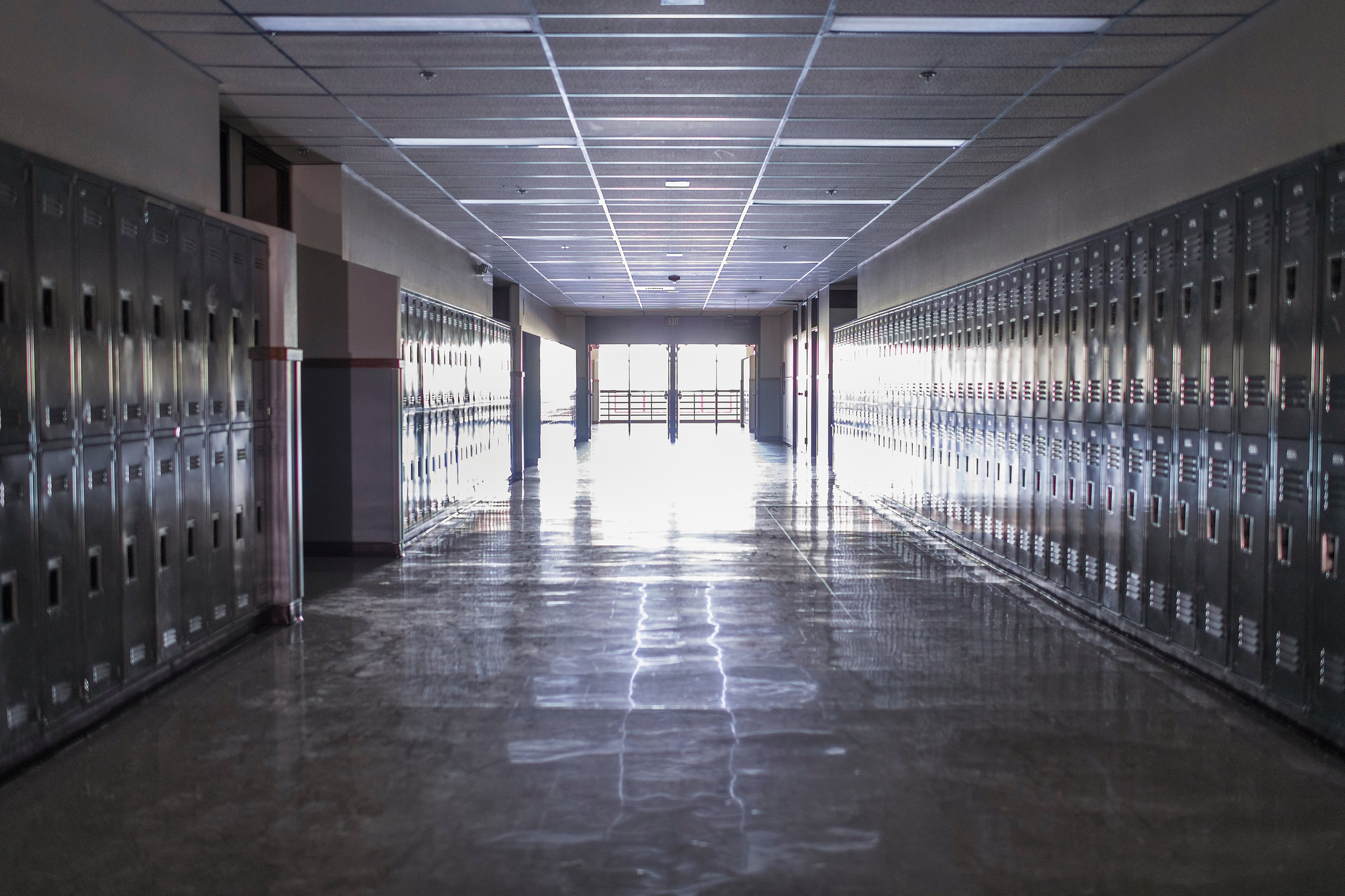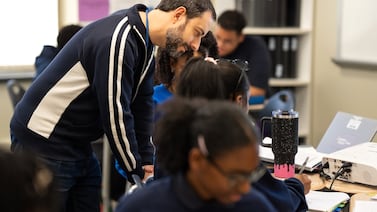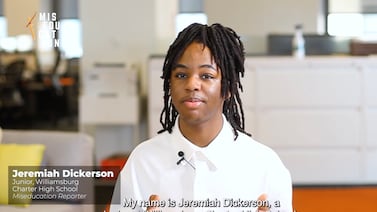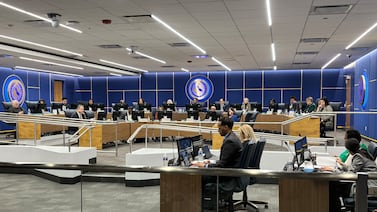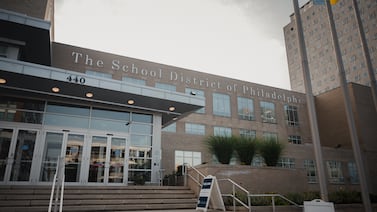Sign up for Chalkbeat Detroit’s free newsletter to keep up with the city’s public school system and Michigan education policy.
The high per-student cost for operating buildings at 19 Detroit district schools, some of which also have low enrollment and are underutilized, is creating funding challenges and will have officials wrestling with what to do with them in the coming years.
The district is already in the process of phasing out the operation of four of the schools, but that may not be the fix the district seeks with the remaining schools. No recommendations have been made to the board. But a report on the small schools, discussed during a school board committee meeting Wednesday, outlined potential solutions that include merging schools, stepping up enrollment efforts, reconfiguring grades served, and investing in marketing.
The costly schools in the Detroit Public Schools Community Schools aren’t covering their costs, meaning their expenses far outweigh the revenue received through state and federal funding and grants, Superintendent Nikolai Vitti said during the committee meeting.
Northwestern High School, for example, enrolls 302 students and the building has a utilization rate of 23%. On the other side of the city, Pershing High School’s utilization rate is 20%. It enrolls 421 students.
Underutilized schools are a critical issue in Detroit, given the district must fill in the gaps in revenue for the schools that don’t have enough per-pupil revenue coming in. But it’s not a problem unique to Detroit. Enrollment declines across the U.S. mean many districts are grappling with what to do with underutilized schools.
DPSCD enrollment has declined from more than 156,000 in the 2002-03 school year to 49,000 during the last school year. The declines have left schools with far fewer students than they were originally built to hold.
Vitti said Wednesday that the community should not look at the list of 19 schools and assume they are all going to be slated for closure.
“It just means that in order for these schools to continue to function … we have to move money (in the budget) to cover the costs,” he said.
“Most of these schools are going to be fine,” Vitti said later in the meeting. But, he said, the district will have to consider the long-term future of underutilized schools with buildings that need costly work.
Board member Angelique Peterson-Mayberry, who chairs the board’s academics committee, said the information shared at Wednesday’s meeting is important for the community “to go deep into.”
“There’s a science and a method to why we’re saying if schools aren’t kind of paying for themselves with enrollment, this is a way to unpack that so that they understand,” Peterson-Mayberry said.
Among the 19 schools are a handful the district is already phasing out, including Ann Arbor Trail Magnet School, J.E. Clark Preparatory Academy, Catherine Blackwell Institute, and Greenfield Union Elementary-Middle School. At these schools, the district has stopped accepting new students and those enrolled at the time the phase-out began will be allowed to remain until they matriculate. When that happens, the schools will close.
The list includes Paul Robeson-Malcolm X Academy, which moved to another location during the last school year. That move was necessary because the district is constructing another building for the school at the old site. But the move has resulted in enrollment declines — from 392 students to 299 — as some parents opted not to make the move. The district expects enrollment to return to normal once the new school opens.
The list also includes two Montessori schools. Those schools are more costly to operate because Montessori programs require more paraprofessionals than a traditional school, the report says.
The report includes a cost per student as well as what the cost is for a comparison school. The comparison schools are similar schools based on grade band and enrollment type. For instance, schools that require an exam or application in order to enroll are compared to each other.
Below is a list of the schools on the list, not including those already being phased out:
Frederick Douglass Academy for Young Men
- Grades: 9-12
- Enrollment: 69
- Utilization rate: 5%
- Revenue: $1,723,543
- Expenses: $3,049,269
- Cost per student: $44,192
- Comparison school cost per student: $12,858
- Potential solution: Relocating the school to another high school and operate as a separate school within a school.
Davis Aerospace Technical High School
- Grades: 9-12
- Enrollment: 96
- Utilization rate: 13%
- Revenue: $1,888,804
- Expenses: $3,082,647
- Cost per student: $32,111
- Comparison school cost per student: $12,858
- Potential solution: There are already plans to move the school to space the district leases at City Airport. The district will also explore expanding course offerings to non-Davis students.
DPSCD Virtual School
- Grades: K-12
- Enrollment: 178
- Utilization rate: n/a
- Revenue: $2,362,709
- Expenses: $4,107,150
- Cost per student: $23,074
- Comparison cost per student: $14,644
- Potential solution: Reconfiguration to Grades 6-12. Reduce enrollment standards. Consider different forms of online learning.
Detroit Lions Academy
- Grades: 6-12 (alternative school)
- Enrollment: 391
- Utilization rate:
- Revenue: $6,555,334
- Expenses: $7,809,592
- Cost per student: $19,973
- Comparison school cost per student: $12,858
- Potential solution: “Because the demand and need for alternative education settings are high, and because students at the school need smaller, supportive learning environments, continue to fund at current levels,” the report states.
Detroit International Academy for Young Women
- Grades: K-12
- Enrollment: 246
- Utilization rate: 16%
- Revenue: $4,066,670
- Expenditures: $4,843,925
- Cost per student: $19,691
- Comparison school cost per student: $14,644
- Potential solution: Reconfiguring grades and/or move to a larger high school building and operate it as a program within a school.
Crockett Midtown High School of Science and Medicine
- Grades: 9-12
- Enrollment: 186
- Utilization rate: 36%
- Revenue: $2,882,917
- Expenses: $3,241,117
- Cost per student: $17,425
- Comparison school cost per student: $12,858
- Potential solution: Eliminate some positions and long-term, consider moving the school to another high school building to operate as a program within a school.
Carstens Academy of Aquatic Science
- Grades: PreK-8
- Enrollment: 274
- Utilization rate: 40%
- Revenue: $5,157,224
- Expenses:$5,517,800
- Cost per student: $20,138
- Comparison school cost per student: $14,503
- Potential solution: The report says leadership challenges over the years led to low reenrollment rates, and that a new leader along with a new building will restore enrollment and overcome the funding gap.
Mark Twain School for Scholars
- Grades: PreK-8
- Enrollment: 253
- Utilization rate: 49%
- Revenue: $4,729,176
- Expenses: $5,024,224
- Cost per student: $19,859
- Comparison school cost per student: $14,503
- Potential solution: The district suggests providing the school with prioritized enrollment and reenrollment support.
Northwestern High School
- Grades: 9-12
- Enrollment: 302
- Utilization rate: 23%
- Revenue: $4,835,242
- Expenses: $5,172,957
- Cost per student: $17,129
- Comparison school cost per student: $12,377
- Potential solution: Continue providing prioritized enrollment support with a focus on reenrollment of current students. The district could also consider turning it into a K-12 school by merging with Sampson-Webber Leadership Academy or as a special education center site.
Osborn High School
- Grades: 9-12
- Enrollment: 413
- Utilization rate: 34%
- Revenue: $6,022,533
- Expenditures: $6,440,302
- Cost per student: $15,594
- Comparison school cost per student: $12,377
- Potential solution: Continue providing prioritized enrollment support with a focus on 9th grade recruitment. The district may also consider the phase-out of Osborn after the new Pershing building opens.
Edison Elementary School (Montessori)
- Grades: Pre-K to third grade
- Enrollment: 277
- Utilization rate: 67%
- Revenue: $4,946,746
- Expenses: $5,139,978
- Cost per student: $18,556
- Comparison school cost per student: $14,859
- Potential solution: Provide school with prioritized enrollment and reenrollment support. The district may also consider a new building for the school.
Detroit School of Arts
- Grades: 9-12
- Enrollment: 523
- Utilization rate: 58%
- Revenue: $7,362,518
- Expenses: $7,706,953
- Cost per student: $14,736
- Comparison school cost per student: $12,858
- Potential solution: The district will continue to develop and expand the K-8 performing arts programs to increase enrollment at DSA. Enrollment is actually on the rise at the school, but staff costs are expensive because of the arts programming, the report says.
Pershing High School
- Grades: 9-12
- Enrollment: 421
- Utilization rate: 20%
- Revenue: $6,125,510
- Expenses: $6,328,932
- Cost per student: $15,033
- Comparison school cost per student: $12,377
- Potential solution: Continue providing prioritized enrollment support with a focus on 9th grade recruitment. The district anticipates a new building being constructed for the school will increase enrollment.
Paul Robeson Malcolm X Academy
- Grades: PreK-8
- Enrollment: 299
- Utilization rate: 82%
- Revenue: $5,466,768
- Expenses: $5,519,697
- Cost per student: $18,461
- Comparison cost per school: $14,859
- Potential solution: The report says: “The school is currently operating out of the former CMA (Communication and Media Arts High School), while a new building is constructed. This had a negative impact on enrollment. When the school relocates back to its new building enrollment will fully fund the school.”
Edmonson Elementary (Montessori)
- Grades: Pre-K to 8th grade
- Enrollment: 260
- Utilization rate: 43%
- Revenue: $4,331,072
- Expenses: $4,340,392
- Cost per student: $16,694
- Comparison school cost per student: $14,859
- Potential solution: Continue to expand the number of seats in lower grades if teachers and paraprofessionals can be hired to build enrollment and address demand for seats in primary grades. Enrollment is actually on the rise, but the Montessori program requires more staffing than a traditional school, which increases costs.
Lori Higgins is the bureau chief for Chalkbeat Detroit. You can reach her at lhiggins@chalkbeat.org.

